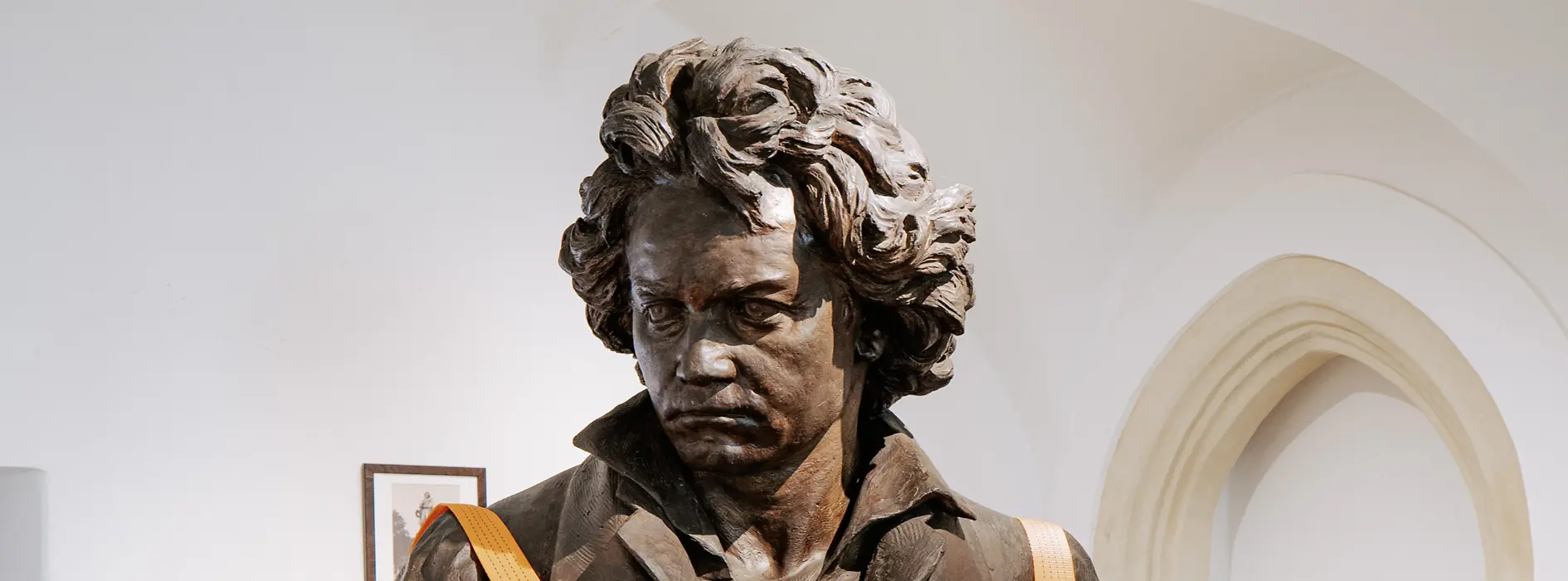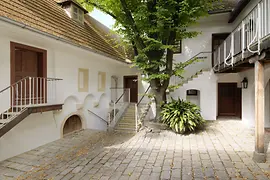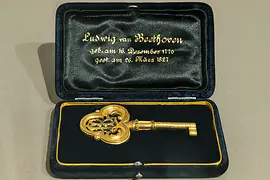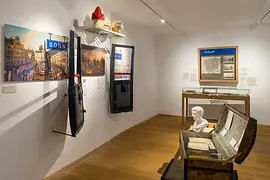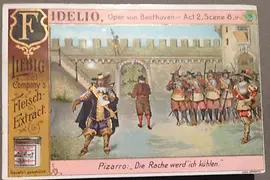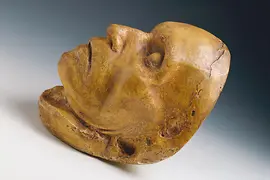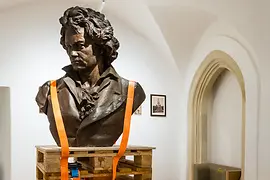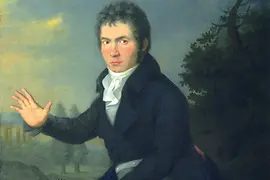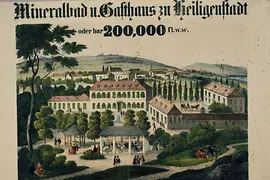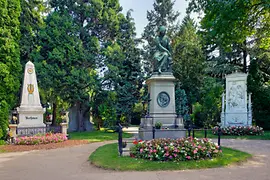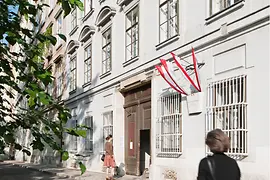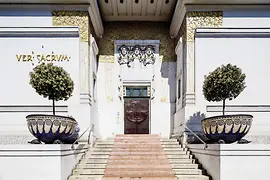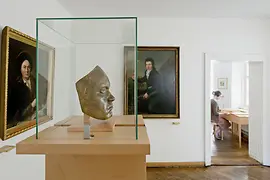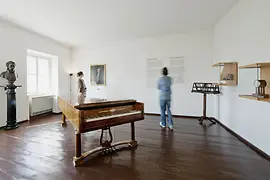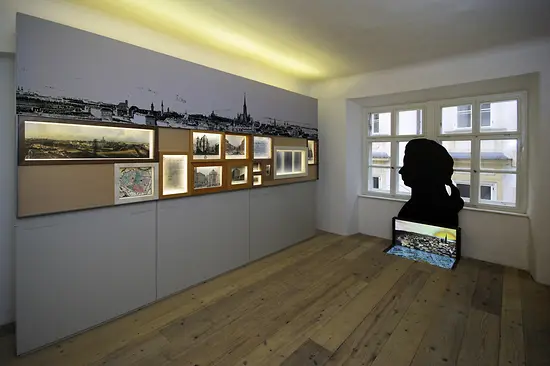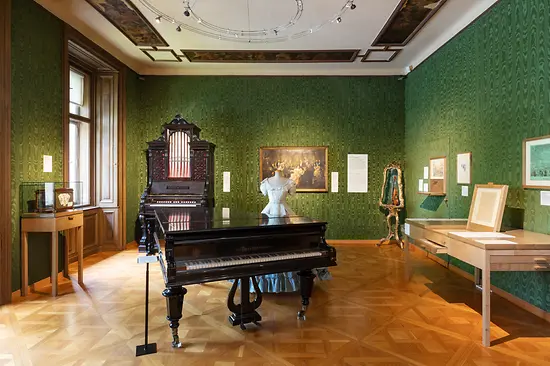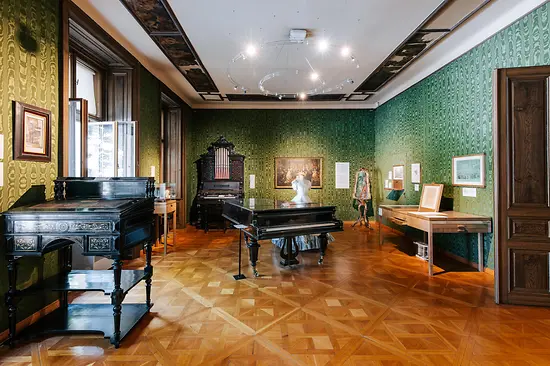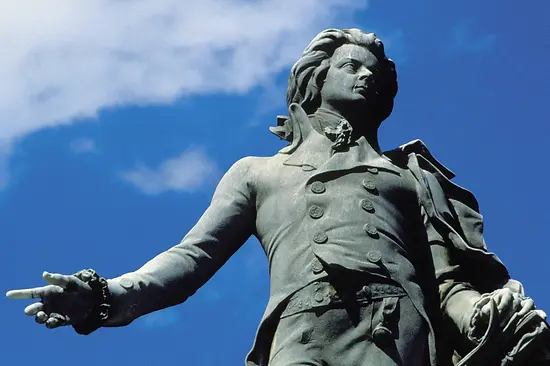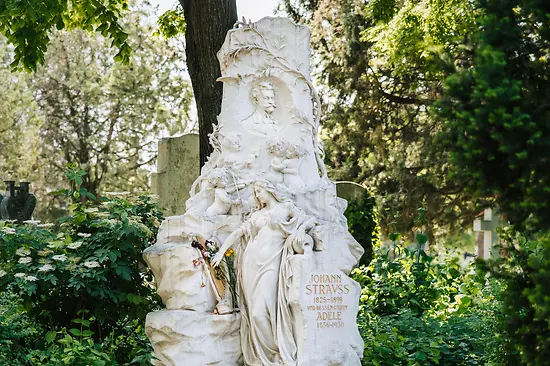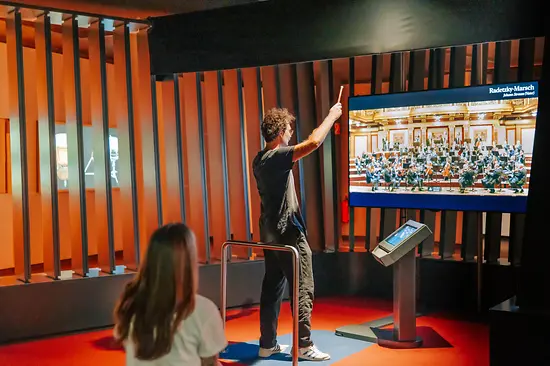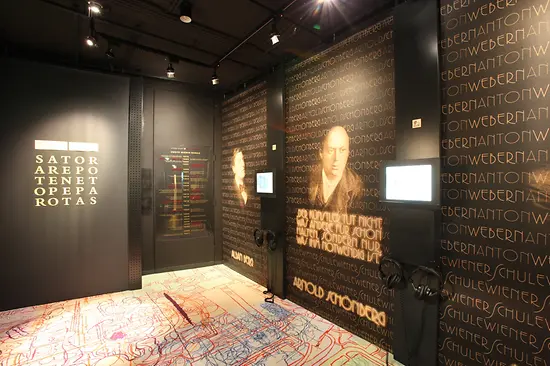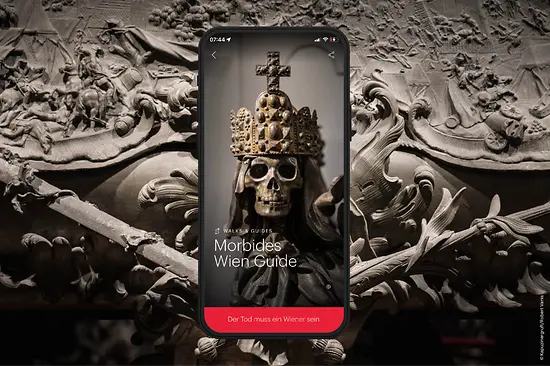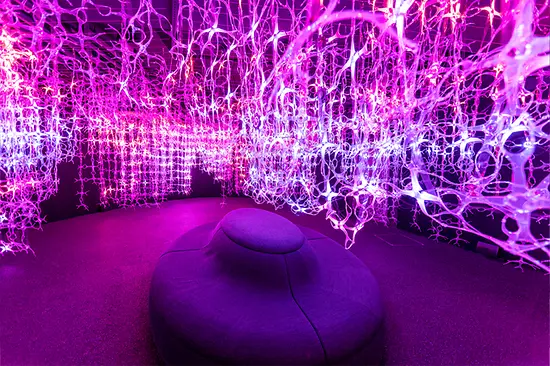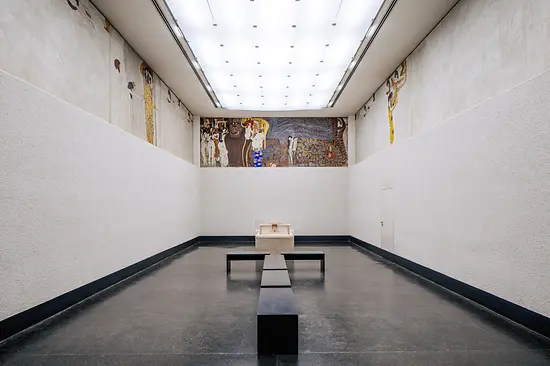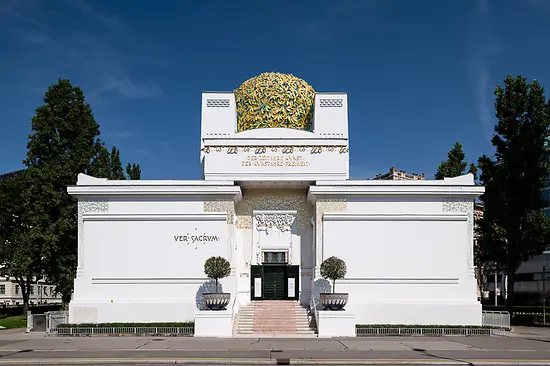Beethoven in Vienna
Born in Bonn in 1770, Beethoven was 17 years old when he first traveled to Vienna to study under Mozart. Yet scarcely had he arrived when he had to return to be by his mother's deathbed. Aged 22, he returned to Vienna again, this time as the pupil of Joseph Haydn – Mozart had died in the meantime. This time, he stayed forever: for 35 years until his death in 1827.
Beethoven Museum
The existing Beethoven apartment at Probusgasse 6 in Heiligenstadt, in the 19th district, is now a 265 m² Beethoven Museum.
A fascinating, modern exhibition leads through 14 rooms. The illuminated themed areas include the history of the house, Beethoven's move from Bonn to Vienna, his stay here in Heiligenstadt - a trendy spa town at the time - the nature, the composing, the moneymaking, performance-giving at the time and his legacy.
Exhibits include ear pipes (an early kind of hearing device) and a prompt box (that was placed on Beethoven's grand piano to amplify the sound). There are also some bizarre items: Eggs symbolize the quick-tempered character of the composer - he is said to have thrown them. In 1875, a company called Liebig started adding collectible pictures to the product packaging of its meat extracts in order to increase its sales, which it did with success; the exhibited edition recounts the content of Beethoven's opera Fidelio. Beethoven's dwindling hearing can be recreated at listening stations.
In this house, the 32 year-old Beethoven wrote his "Heiligenstadt Testament" in a state of deep despair. He wrote this letter to his brother, which was never sent, when he learned that there would be no remedy for his deafness. At the same time, he worked at Probusgasse on major works, including the three piano sonatas Opus 31, the oratorio "Christ on the Mount of Olives" and the "Eroica" symphony.
Heiligenstadt was situated far outside the city walls back then; today, it is part of the smart 19th district (Döbling). Just a few steps away is the heuriger (wine tavern) Mayer am Pfarrplatz, located in an atmospheric house which Beethoven lived in for a while in 1817. There are excellent Viennese wines here. Another tip: Ten minutes' walk up Eroicagasse, a path leads along a stream - the Beethovengang often visited by the maestro.
Viennese original apartment
Beethoven fans will find the apartment in the Beethoven Museum as well as another unchanged apartment in Vienna - nowadays a memorial site containing many personal objects and music listening stations (note opening times!):
Beethoven lived in the Pasqualati House (named after its owner) in the center of Vienna on several occasions between 1804 and 1815. The composer worked here on his opera "Fidelio" and on piano pieces such as the well-known "Für Elise". The view of the Ringstrasse boulevard and the University from the fourth-floor apartment is spectacular.
Fancy more?
Triumphal Beethoven premieres were held all over Vienna: in the Eroica Hall of the Austrian Theatre Museum, in the Grand Redouten Hall of the Spanish Riding School and in the Festival Hall of the Austrian Academy of Sciences. The Theater an der Wien was the stage for the premiere of the opera "Fidelio", and Beethoven even lived there for a while.
In Beethoven Park, opposite the Vienna Konzerthaus, you'll come across two bronze depictions of Beethoven: Caspar Zumbusch's sculpture erected in 1880 and the colorful, contemporary monument by Markus Lüpertz from 2017.
Vienna's museum of sound, the House of Music, naturally also presents Beethoven in detail. A room focusing on his 67 changes of residence within Vienna is dedicated to him in the apartment of the Viennese maestro.
Gustav Klimt's "Beethoven Frieze" (detail in the picture above) hangs in the Secession. Beethoven's grave of honor can be found in a prominent spot at Vienna's Central Cemetery.
Beethoven tour with ivie
Discover Beethoven's Vienna with your smartphone: ivie, the digital city guide for Vienna, is your perfect companion through the city. The (free) app invites you to go on exciting city walks with the feature "Walks & Guides". Including an audio walk that leads right through Beethoven's Vienna and shows the composer from a fresh perspective.
Further tips for walks and tours about musicians that you can do on your own – with description and localization on the city map:
- Probusgasse 6, 1190 Wien
- https://www.wienmuseum.at/beethoven_museum
Vienna City Card
Standard ticket price: 8€ / reduced ticket price: 6€
Available on site and online.
Booking link: https://shop.wienmuseum.at/de/tickets/ticket-locations/beethoven-museum
Buy now with discount:
Prices
- Free admission for young people under 19 years of age
- Free admission on first Sunday of the month
Opening times
- Tu - Su, 10:00 - 13:00, 14:00 - 17:00
December 24 and December 31: 10:00 a.m. to 2:00 p.m.
Closed: January 1, May 1, December 25
Accessibility
no steps
Seeing eye dogs allowed
Patio and exhibition areas: no steps; ticket/shop area 2 steps, restrooms 2 steps. The various exhibition rooms can be reached via several steps. Seating on the patio and by individual exhibits in the exhibition rooms.
- Mölker Bastei 8, 1010 Wien
- https://www.wienmuseum.at/beethoven_pasqualatihaus
Prices
- Free admission for young people under 19 years of age
- 1st Sunday of the month: Free admission
Opening times
- Tu - Su, 10:00 - 13:00, 14:00 - 17:00
December 24 and December 31: 10:00 a.m. to 2:00 p.m.
Closed: January 1, May 1, December 25
Accessibility
Seeing eye dogs allowed
Apartment only accessible via steps.
- Seilerstätte 30, 1010 Wien
- info@hdm.at
- https://www.hdm.at
Vienna City Card
Standard ticket price: 19€ / reduced ticket price: 15€
Available on site and at ticket.viennacitycard.at
Buy now with discount:
Opening times
- daily, 10:00 - 22:00
24.12. 10a.m. - 6 p.m., 23.03. 10a.m. - 6p.m. (5p.m. last admission)
Accessibility
no steps (Automatic sliding doors)
no steps
Seeing eye dogs allowed
Wheelchair accessible restroom available.
Tours in sign language on request, as well as tours for blind and visually impaired people.
Access to all exhibition rooms and café: no steps (via elevator).
